Carl Gustav Jung

By bob k
In 1961, Bill Wilson, reached out, rather belatedly, to the famous psychoanalyst, Carl Jung, in order to express some gratitude to him, on AA’s behalf, for “…the conversation between you (and Rowland) that was to become the first in the chain of events that led to the founding of Alcoholics Anonymous.” (Not-God, Ernest Kurtz, p. 8) Rowland Hazard’s visit to the famous psychiatrist, now believed to have taken place in 1926, and not 1931, is recounted in the Big Book story of a “certain American businessman” on pages 26-27.
Fairly recent access to previously unavailable Hazard family and business records has led historians to conclude that AA’s account of Jung’s treatment of “a certain American businessman” is somewhat inaccurate. The duration of Rowland’s therapy under Jung was perhaps two months. This all could have been the result of entirely innocent misremembering of a collection of drunks, or, the tale may have been intentionally aggrandized.
“Like his father before him, Bill W. was a spellbinding storyteller: and, as Robertson observes, he had a ‘lifelong penchant for embroidering the facts while accurately summarizing the gist of an event.’ Thus his factual liberties may be regarded as acts of poetic license.” (Bill W. and Mr. Wilson, Matthew Raphael, p. 12. The “Robertson” referred to in Mr. Raphael’s quotation is Pulitzer Prize winning Nan Robertson, author of “Getting Better – Inside Alcoholics Anonymous.”)
Emotional Displacements and Rearrangements
The alcoholic’s need for a “spiritual experience” comes from this Jung-Hazard encounter, an event historian Ernie Kurtz calls one of the four “founding moments in the history of the idea and the fellowship of Alcoholics Anonymous.” (Not-God, p. 33) It comes as well, from the work of William James. But what IS that exactly?
To me (Jung) these occurrences are phenomena. They appear to be in the nature of huge emotional displacements and rearrangements. Ideas, emotions, and attitudes which were once guiding forces of the lives of these men are suddenly cast to one side, and a completely new set of conceptions and motives begin to dominate them. (BB, p. 27)
Of course, such change is often associated with religious conversion, but Jung’s language is evocative of the “personality change” of APPENDIX II. Jung had attempted to produce such a personality change, or “emotional rearrangement,” in Rowland, through therapeutic methods. Even James includes an “atheist” recovery. The very term “mind-cure” points directly at what needs to be “cured.”
Carl Jung was a world-renowned psychiatrist, psychologist, therapist, researcher and writer. He is seen by many as “a superstitious genius.” A review of his work is beyond the abilities of this writer and outside of the scope of this essay. Such information is easily accessible elsewhere for those who seek it.
For someone who so profoundly influenced the course of events leading to what would become AA, there is remarkably little about him in our histories, and that’s a shame as he is quite a fascinating fellow.
The Unconscious
 “My life is a story of the self-realization of the unconscious. Everything in the unconscious seeks outward manifestation… I can only understand myself in the light of inner happenings. It is these that make up the singularity of my life…” (Memories, Dreams, Reflections, Carl Jung, p. 5)
“My life is a story of the self-realization of the unconscious. Everything in the unconscious seeks outward manifestation… I can only understand myself in the light of inner happenings. It is these that make up the singularity of my life…” (Memories, Dreams, Reflections, Carl Jung, p. 5)
Psychology as a science is divided into two distinct branches, normal and abnormal, each of these, of course, further segmenting into schools and sub-strata. Freud, Jung, Adler and others treated and studied the mentally ill, and in doing so, came to understandings regarding the brain function, emotionality, and maturation processes of “normal” people. This was a grand era of psychology where all-encompassing theories of personality were postulated. The field grew and progressed through the examination, and eventual debunking, of the majority of these ambitious hypotheses.
Modern psychology is a far less exciting world of statistical analysis, control groups, random samples, and elaborate examination of minutiae, all reflecting the desire to be scientific, and to be seen as being scientific. The era of Jung, Freud, and Adler was quite different. Before the “Behaviorist Manifesto” of John B. Watson brought real science and measurement to psychology, the discipline was much more of an offshoot of philosophy.
Wilhelm Wundt, seen by many as the father of modern psychology, employed as his main technique, “introspection,” looking inward, self-examination. Edward Titchener introduced a modified version of this to America. Although this method is fraught with perils, most especially perhaps for alcoholics who “cannot after a time differentiate the true from the false” (Doctor’s Opinion, BB, p. xxviii), these 19th century techniques lie at the heart of the theorizing of Carl Jung.
Early Years
Jung was born in Switzerland on June 26, 1875. He was the son of a Protestant parson who suffered from hypochondria, and a developing crisis of faith. His mother had ongoing psychiatric problems. By age three, young Carl developed some seemingly emotionally induced physical problems, as the result of tension in his parents’ marriage.
My illness, in 1878, must have been connected with a temporary separation of my parents. My mother spent several months in a hospital in Basel, and presumably her illness had something to do with the difficulty in the marriage… I was deeply troubled by my mother’s being away. From then on, I always felt mistrustful when ‘love’ was spoken. The feeling I associated with ‘woman’ was for a long time that of innate unreliability. (MDR, p. 8)
Those familiar with the life of Bill Wilson will recognize similarities to the rapid unraveling of Emily Wilson’s marriage to Gilman, and her various “rest cures” away from the family. Later on, there was to be a further similarity to Wilson’s feelings of inferiority. As a “townie” from the unsophisticated mining town of East Dorset, Wilson was cowed by the wealthy “summer people,” and their grand Manchester residences. At ten, Carl Jung was sent to the Gymnasium in Basel.
“I was taken away from my rustic playmates, and truly entered the ‘great world,’ where powerful personages… lived in big, splendid houses, drove about in expensive carriages drawn by magnificent horses, and talked a refined German and French. Their sons, well dressed, equipped with fine manners and plenty of pocket money, were now my classmates.” (MDR, p. 24) This is much like a young Bill Wilson at Burr & Burton Academy. The ten year old, poor parson’s son became intensely aware of the holes in his own shoes.
Vivid Memories and Dreams
Jung’s course in life seems to have been profoundly influenced by some childhood experiences and dreams which remained indelibly etched in his mind for the rest of his life. He confesses some morbid fascination with death, from the very early age of about four. That dead folks were said to have “gone to Jesus,” made the youngster greatly wary of Jesus. This was compounded by seeing a frightening looking man whom others called a “Jesuit.” The black cassock was a dress to a small child, and an unusual garb for a man.
“For days afterward the hellish fright clung to my limbs and kept me in the house. Later I realized, of course, that the black figure was a harmless Catholic priest. At about the same time… I had the earliest dream I can remember, a dream which was to pre-occupy me all of my life… I discovered a dark, rectangular, stone-lined hole in the ground… (Descending, he finds a platform on which) stood a wonderfully rich gold throne… a real king’s throne in a fairy tale.” (MDR, p. 12) Standing on the throne was an enormous, fleshy, one-eyed, tree trunk-like object, which he later realized was a phallus, and still later, a “ritual phallus.”
In the dream, his mother says, “That is the man-eater.” Introspection, the study of Freudian dream interpretation, and the study of myth lead to an interpretation of these dark, dreamed events, the phallus of this dream being “a subterranean God, ‘not to be named,’ and such it remained throughout my youth, reappearing whenever anyone spoke too emphatically about Lord Jesus.” (MDR, p. 13) Somehow, the giant phallus, and the feared “black man” are linked, and Christianity is well on the way to being abandoned by Jung, in favor of a very AA-like, mystical “experience of God.”
Yes. Really.
Memories of a tumble downstairs, another blood-letting fall against a stove leg, and a near toppling into the Rhine river, for Jung, pointed to “an unconscious suicidal urge or, it may be, to a fatal resistance to life in this world.” (MDR, p. 9)
Sigmund Freud
Jung found Freud’s The Interpretation of Dreams to be a brilliantly insightful tome which “cast a valuable light on schizophrenic forms of expression… it all linked up with my own ideas.” (MDR, pp. 146-147) At the time, the early twentieth century, Sigmund Freud was “persona non grata” in the academic world. When, in 1906, Jung wrote a paper supporting Freud’s theory of neuroses, he put at peril his own professional reputation.
When Jung met personally with Freud, in 1907, he was greatly honored. Although Jung did not agree with the universality of Freud’s sexual theory, he was too intimidated to debate the issue. Ultimately, Freud’s dogmatic adherence to his own theories, and differences in views on the role of spirit, led to a breakdown in their friendship.
Freud was seen as “emotionally involved in his sexual theory to an extraordinary degree” (MDR, p. 150), and militant in his battle against all things smacking of “occultism.” Writing his autobiography some fifty years later, Jung remembers Freud as both bitter and one-sided, “a man in the grip of his daimon.” (MDR, p. 150)
A Flourishing Career
No lasting harm appears to have been forthcoming to Jung as the result of his estrangement from Dr. Freud. As the years have passed, Jung’s position in the history of psychiatry has even, in the eyes of many, surpassed his old mentor. Jung was a prolific writer, and he had a wide variety of interests which included astrology, mysticism, alchemy, and the occult.
Although he had a compelling desire to be viewed as a “man of science,” his eccentric passions pushed him toward the fringe of the academic community.
Within his field, he is remembered as the founder of a new school of psychotherapy, “analytical” or “Jungian” psychology. He is the creator of the idea of two distinct personality types, “introverts” and “extroverts,” and of the concept of a “complex.” He wrote volumes on dream analysis.
His interactions with women, including patients, marred his reputation, and provided fodder for critics.
Individuation
At the core of Jungian theory is his concept of the tripartite human psyche. The conscious mind he called the “ego.” The two other elements were the personal unconscious and the collective unconscious. “Individuation” was his term for the integration of these components necessary for a healthy person.
His intense exploration of a multiplicity of world religions led him to conclude that a “journey of transformation” is at the mystical heart of all religions.
Rowland Hazard and AA
“Rowland Hazard’s prominence could not hide the ravages of his alcoholism… In desperation, the investment banker went to Zurich in 1926 and placed himself under the care of Carl Jung… When Hazard later relapsed (late 1927 or early 1928), he returned to Jung, only to be told… that there was nothing left medical or psychiatric treatment could do for him.” (Slaying The Dragon, William L. White, p. 170)
Jung’s first gift to AA highlighted the hopelessness of the condition.
“Bill Wilson linked James’s portrayal of ‘conversion’ with what he had learned directly from Dr. Silkworth and indirectly via Rowland and Ebby from Dr. Jung, of the necessity and role of hopelessness.” (Not-God, Ernest Kurtz, p. 23) Jung also pointed to the solution that was found in greater depth in the ideas of William James’s.
Jung went on to say to say that Rowland’s only hope was a ‘spiritual awakening’ or religious experience. Jung also told him that such transformative experiences were quite rare. Jung understood that alcoholism created a spiritual void… a spiritual experience seemed to fill that void and stem the alcoholic’s voracious appetite for the instrument of his or her own self-destruction. (Dragon, p. 170)
Rowland’s treatment under the renowned psychoanalyst was no more than a couple of months. He did bring home, if not sobriety, the notion of the need to seek a spiritual experience, and he seems to have found it some seven or eight years later with the Oxford Group. Jung’s disparagement of the “human power” of medicine did not stop Hazard from pursuing other therapy. It is known that he was being treated by Courtenay Baylor in 1933-34.
Synchronicity
Henrietta Seiberling thought that there were just too many elements of happenstance leading up to the fateful meeting of AA’s cofounders. She saw powerful evidence, to no one’s enormous surprise, that “the hand of God” had written the script. “Or as Carl Jung might have said, the uncanny concatenation of circumstances surrounding the seemingly fated meeting of Wilson and Smith exemplified synchronicity, Jung’s term for ‘a meaningful coincidence of two or more events, where something other than the probability of chance is involved.’” (Raphael, p. 102)
In our very large world, each day there are trillions upon trillions of daily events. Some of these occurrences are unusual, and mathematical probability teaches us that a series of anomalous happenings is consistently among the expected results. Those seeking evidence of divine intervention will find it. God bless them. Jung’s synchronicity idea is somewhat more convoluted, and beyond the scope of this essay.
Religiomania
“In Varieties James repeats an adage… ‘The only radical remedy I know for dipsomania is religiomania.’ (VRE, 268n) This is the same advice Carl Jung gave Rowland H., and that Ebby T. in turn passed on to Bill W. : that getting religion was the key to getting sober.” (Raphael, p. 84)
This is essentially the message of AA’s Big Book, written as it was against the background of Protestant pietism of 1930’s America. That non-believers were able to achieve sobriety as well, by transformations that were less religious, or less THAN religious, prompted the somewhat “Jungian” Appendix II, added in 1941. Moving forward, Western society is opening itself both to ancient Eastern philosophies, and ultramodern notions of “spirituality” that is unattached to all things supernatural.
Some truth remains in the view of the “hopelessness” of the alcoholic condition. Jung did not lie to Rowland. There are few credible reports of real alcoholics returning to social drinking, and merely quitting drinking without other changes is generally remarkably unsatisfying. Although the AA process brings “God” to some, along with the AA fellowship, it can bring to ALL a new and rewarding connection to the “human network.”
Helping others brings purpose. Having purpose is both gratifying and esteem-building. Reverend Rick was right, in part, about a “purpose driven life,” but people in our diverse world are finding fulfilling objectives within the physical world, especially if they are led to a “personality change sufficient to bring about recovery from alcoholism.” (BB, p. 567)
Such a change “has manifested itself among us in many different forms.” (BB, p. 567)
Indeed!
Addendum – Liber Novus
There is inadequate space to deal in detail with a very recent event that has sparked renewed interest in Carl Jung, some fifty years after his passing, but it must be mentioned.
In 1913, at the age of thirty-eight, Jung experienced a horrible “confrontation with the unconscious”. He saw visions and heard voices. He worried at times that he was “menaced by a psychosis” or was “doing a schizophrenia”. He decided that it was valuable experience and, in private, he induced hallucinations or, in his words, “active imaginations”. He recorded everything he felt in small journals. Jung began to transcribe his notes into a large red leather-bound book, on which he worked intermittently for sixteen years. The bulk of the experience spanned 1913 to 1917.
 His own talk of “psychosis” may reflect an exaggerated self-deprecation, as he continued to see patients during this era, and also served in the Swiss army. Jung left no posthumous instructions about the final disposition of what he called the Red Book. The family finally allowed the book to be published in late 2009, with a Reader’s Edition made available in 2012.
His own talk of “psychosis” may reflect an exaggerated self-deprecation, as he continued to see patients during this era, and also served in the Swiss army. Jung left no posthumous instructions about the final disposition of what he called the Red Book. The family finally allowed the book to be published in late 2009, with a Reader’s Edition made available in 2012.
In 1957, near the end of his life, Jung spoke to Aniela Jaffe about the Red Book and the process which yielded it. In that interview he stated:
The years… when I pursued the inner images, were the most important time of my life. Everything else is to be derived from this. It began at that time, and the later details hardly matter anymore. My entire life consisted in elaborating what had burst forth from the unconscious and flooded me like an enigmatic stream and threatened to break me. That was the stuff and material for more than only one life. Everything later was merely the outer classification, scientific elaboration, and the integration into life. But the numinous beginning, which contained everything, was then. (Liber Novus, p. vii)
The strangeness continues.


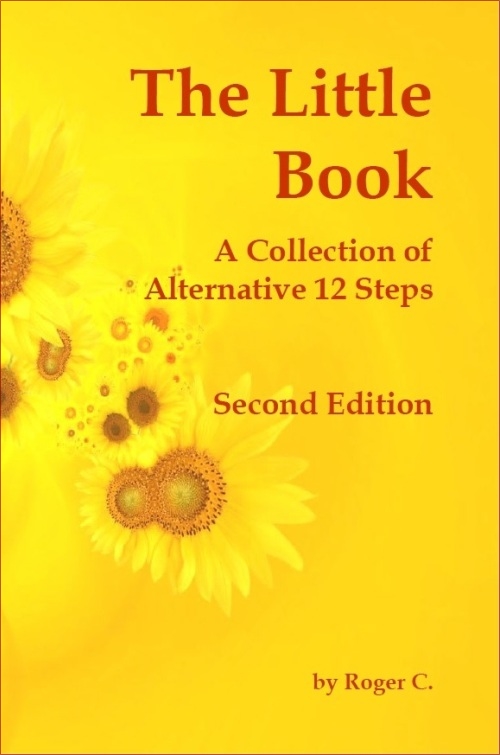
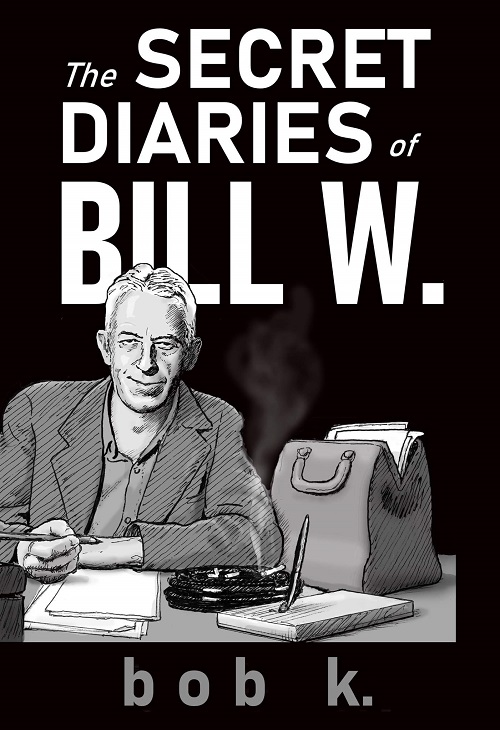
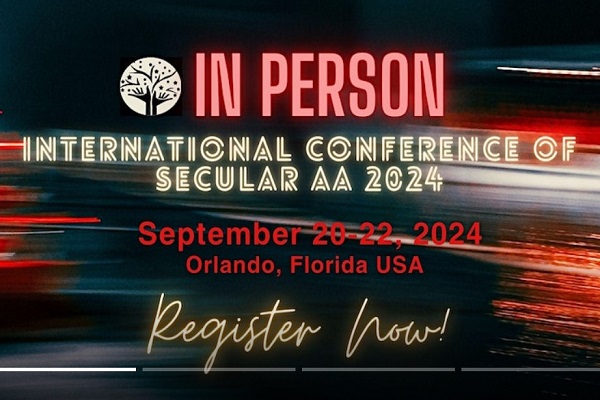


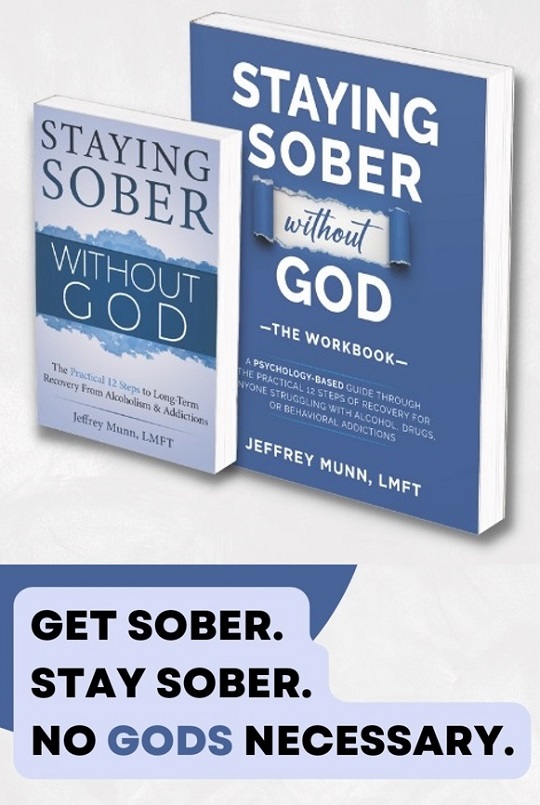
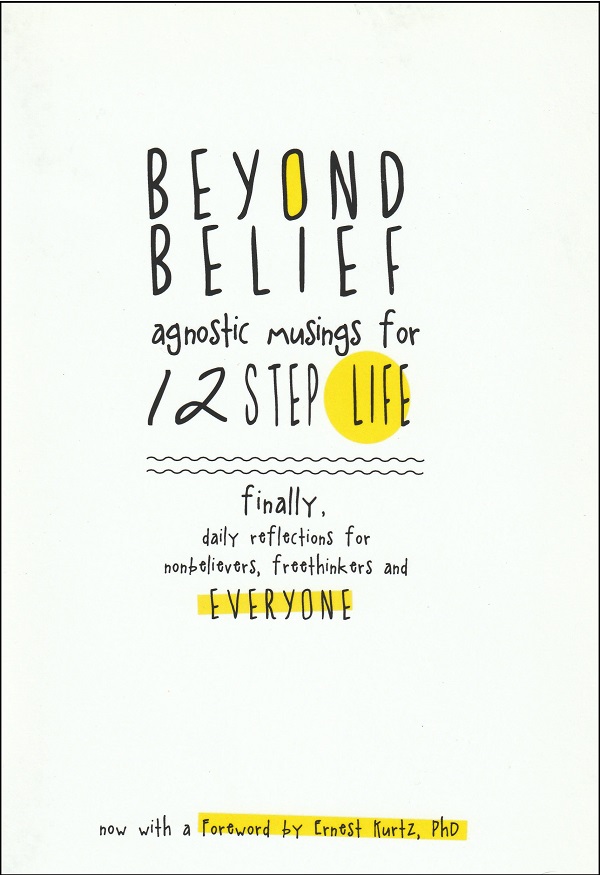

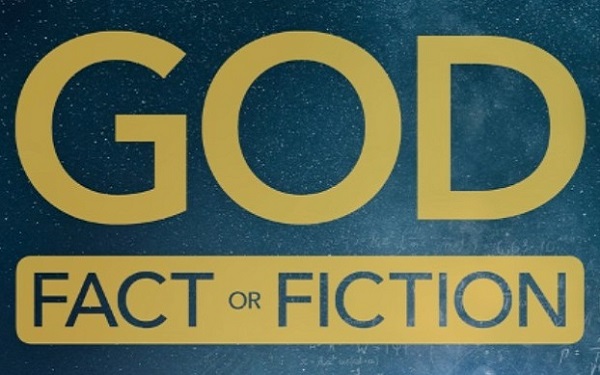
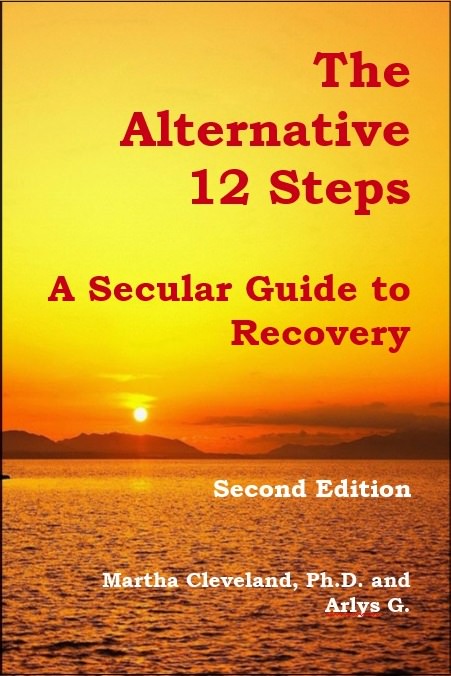



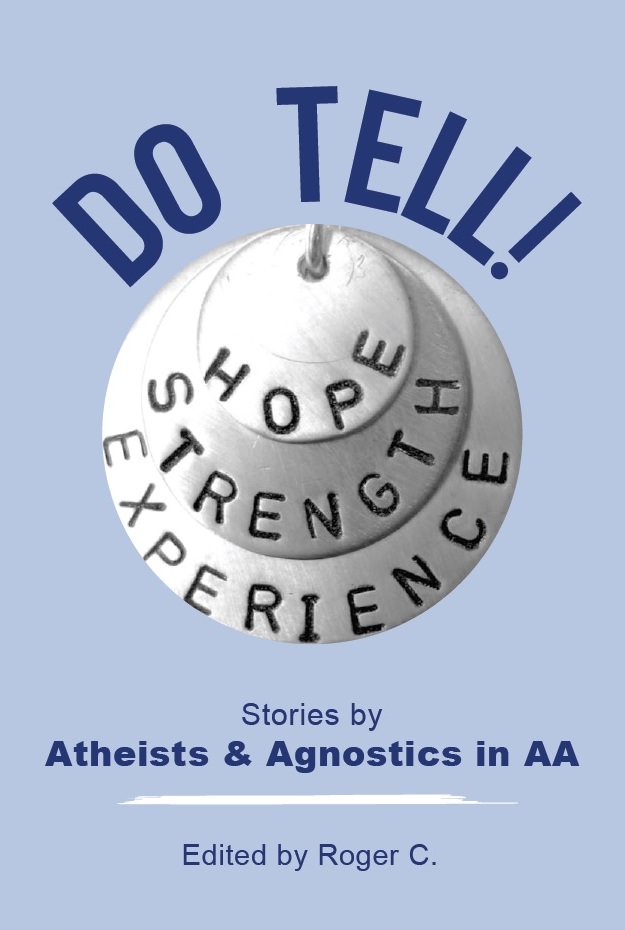
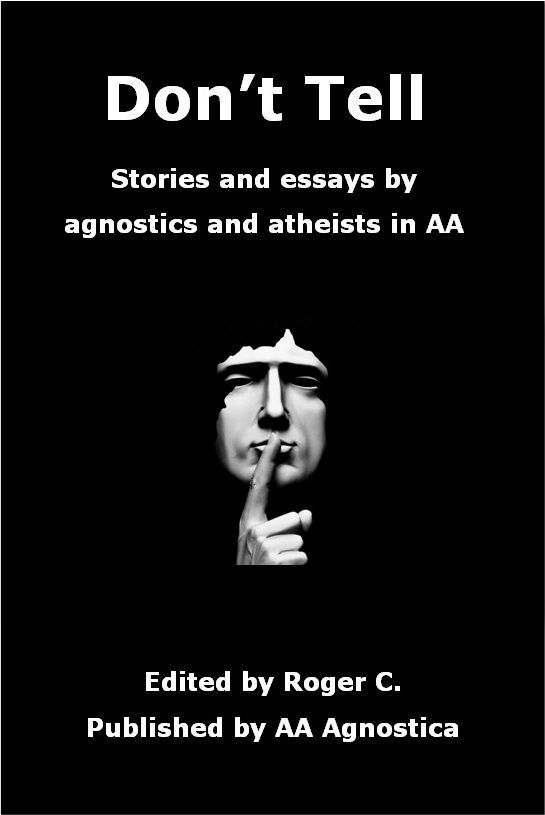




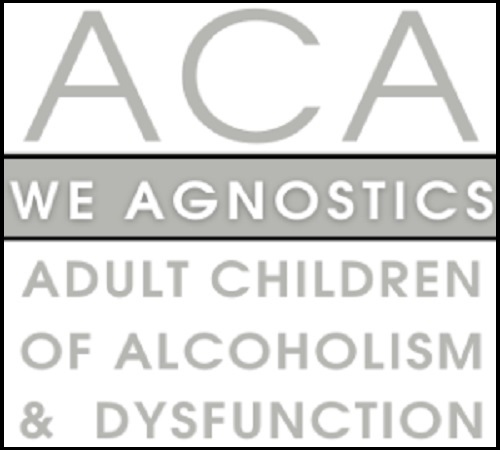


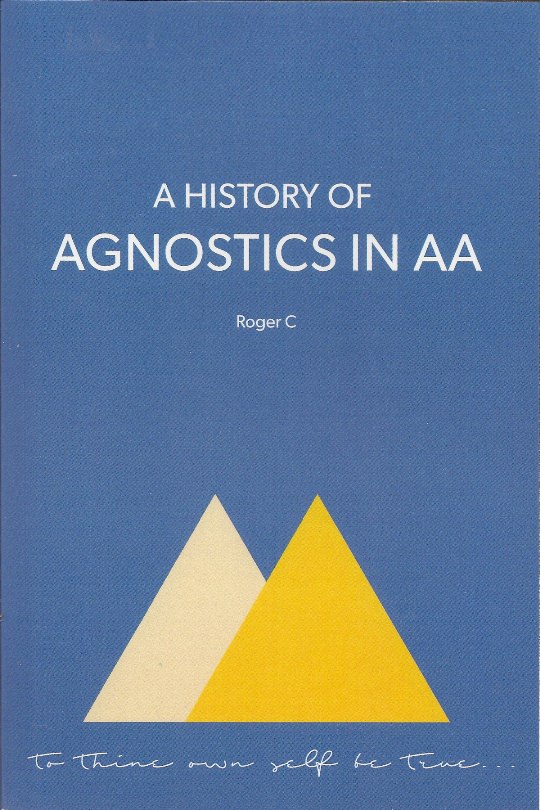
Well done, Bob.
It’s altogether fitting that a crazy practitioner of a pseudoscience such as Carl Jung should inspire the likewise whacked-out Bill Wilson, who believed he could commune with souls of the departed at seances. And I wasn’t aware that Bill Wilson had a penchant to exaggerate his stories. To me, this means that you can’t trust what he says. As far as I’m concerned, Wilson and the other early AA figures did help one another to stay sober through sharing their experience, strength and hope, but only dimly recognized what they were doing. They falsely attributed their success to relying on god and their religiously oriented steps, with the result being the traditional AA we have with us today. Fortunately, things are changing with the advent of more and more atheist and agnostic AA groups, and with the gradual development of addiction science.
There is something as frightening in all this stuff as anything published by those illuminati freaks who believe we’re still being plagued by mediaeval, occult conspiracies. AA’s ridiculous leap of logic that, since nobody really knew how we got sober it had to be God routine, has turned regular meetings into the most preposterous exercises in glassy eyed conformity. Any expression of doubt is met either with the hostility of one who believes that only those afflicted by a kind of demonic intellectualism could dare utter such a thing or, a collective, momentary hesitation, the kind that happens when an inappropriate fart disrupts otherwise polite proceedings.
And then there are appropriate farts. I consider Martin Luther one of the greatest and most influential (if not perfect) men in history. Once a group of students approached him. “Dr. Luther,” they asked, “what is the best way to get rid of evil spirits?” Luther replied: “Mit einem Furtz” (“with a fart”).
Love your first sentence! I’ve read a fair amount of Jung’s writings — always unfavourably impressed by his mysticism. Did Jung (or, for that matter, Bill) ever come right out and say: “Don’t pick up the first drink.”?
Weaving through information and steering us around misinformation, as you’ve done here, really help me gain context in the here-and-now. Bob, you are a true reporter; you let your characters tell their story and you’re own personality, while adding to the story-telling tradition, doesn’t steal the spotlight.
I drew on your insights of Ebby T in my Rebellion Dogs blog this week in talking about how June 10th, 1935 is merely a symbolic starting point to the AA story.
I expect that your book and work will continue to be cited and enjoyed by historians and for people, like in my case, looking for context to my life, my addiction and my recovery.
Thank you. I enjoyed that piece.
It would be unfortunate if Carl Jung became characterized as a pseudo scientist. His writings reveal his profound dedication to applying the basic principles of science to psychology. That dedication is one of his greatest contributions. Picking up any work by him may produce an immediate appreciation for the steady and methodical pace of his studies. His work was a combination of observations and theory with regards to the human mind. Things which are now household concepts such as the self or the unconscious mind, he developed and made legitimate. One does not just pick up Jung in a nutshell: coming to understand the work he did requires patience.
Similarly, the psychoanalytic process that Jungian therapy entails is a long term thing, similar to the journey towards wholeness that that one finds in many other cultures and movements, including that of AA. This is in stark contrast to the current “solution focused, brief” therapies that are popular today. We pull into therapy now like a car into a pit stop, hoping to functional enough to get back out there and do our thing…
Among many other things, Jung studied alchemy, the I Ching, and astrology, but he did so using the basic principles of science to guide his inquiries. That makes him unique. It also makes his writings hard to access, since he burdened himself with being methodical and thorough. It also demonstrates that the best therapists are at least as much artists as they are scientists.
Incredible article. Excellent work!
I want to thank Bob C for his comments. I started reading Jung in my teens and immediately connected with many of the ideas he came up with, particularly the collective unconscious, archetypes, interpreting dreams, and the development of the personality…what is innate and what is nurtured.
As Bob stated, you can’t just jump into Jung. The web of ideas are extremely complex and have to be put in context to understand. He was a phenomenally great intellectual and thinker for his time, and an important departure from Freud. He is an intellectual giant that many people stand on the shoulders of.
If anyone is just beginning to understand Jung I would recommend “The Primer of Jungian Psychology.”
http://www.goodreads.com/book/show/585716.A_Primer_of_Jungian_Psychology
Sorry, I meant if anyone is interested in beginning to understand Jung, I would recommend A Primer to Jungian Psychology.
Thanks for the excellent essay bob k. I really enjoy these article paying tribute and shedding a little light on the origins of AA based recovery. So much mystic legend has grown up around the founders… who were just a bunch of struggling drunks trying to make money. I forgive Bill his exaggerations and various liberties with the truth since it seems clear that his drive as a salesman and adequate literacy were essential to get the project off the ground. It has always seemed obvious that the story about Dr. Jung was introduced like the Magi in the New Testament in an attempt to get some of the scientific cachet to rub off on AA.
It is hard to remember these days that until recently the most advanced scientists had only the vaguest idea of what happened inside a person’s head. Generally they couldn’t examine a brain unless that brain were expired and its former owner wasn’t using it anymore, at all. Nowadays we can actually watch people think. The old style psychology was artful guesswork without even knowing what parts of the brain did what and how they could malfunction and be repaired. Much of AA is like that. A 1940 style wild guess at what was going on in the addicted brain. Bill’s talk of “defects” and “shortcomings” and “spirituality” and “self will run riot” and “clashing instincts” are all an attempt to describe the turmoil of the brain in active addiction and attempted recovery. I think it is time for a lot of the concepts to be retired and replaced with information we know to be true but people will always love their metaphors and parables. I do get rather tired of the “hokey old religion” as well as the outdated psychological and medical concepts. One of these days when a member at a meeting talks about his “alergy” or some kind of acetone accumulation giving him urges and cravings I will flip right out. But probably not today.
Thanks again.
I agree that this era of AA, as all of AA history, is very interesting. This article is timely.
Many concepts, however, which Jung dealt with, have in fact been borne out in the evolution of psychology. Brain function MRI snapshots are cool, but are easily manipulated by the dubious intents of drug companies as much as they are useful to us seeking transformation at all. Brain chemistry as it relates to addiction has almost become deterministic, wherein people are told “thats your brain, there’s nothing you can do about it.”
The instincts are an example of our need to wrestle with our selves, and which prove that we are not “tabula rasa” but rather we are born with certain powerful inclinations which are only semi conscious in nature. Maybe the most difficult and lasting concept Jung developed (along with Freud) was the unconscious mind. Many people do not realize what a profound discovery this was. It was certainly one of the great scientific discoveries of the last 100 years. Most people have yet to come to terms with the unconscious-either as a concept or as an experience- and proceed as if all we need to do is “choose our way” into a transformed state.
Thanks Bob, impressive. Jung treated alcoholics when he was on the staff of the Burgholzli clinic in Swizerland. In his letter to Bill W., which you quote, re: his advice to Rowland H., he wrote that it was ‘the result of many experiences with men of his kind’. Mary Addenbrooke, in a paper for the Society of Analytical Psychology, describes Jung’s own experience of being drunk during a visit to a distillery at the age of 14. She wrote,
In his letter to Bill W., Jung said, “The only right and legitimate way to such an experience (spiritual awakening) is that it happens to you in reality, and it can only happen to you when you walk a path which leads to a higher understanding. You might be led to that goal by an act of grace or through a personal and honest contact with friends, or through a higher education of the mind beyond the confines of mere rationalism. I see from your letter that Rowland H. has chosen the second way, i.e. ‘a personal and honest contact with friends’ – not a born again conversion!” Jung went on, “I am strongly convinced that the evil principle prevailing in this world leads the unrecognised spiritual need into perdition if it is not counteracted either by real religious insight or by the protective wall of human community”, e.g. the Fellowship.
Thanks, Bob, for another excellent read, adroitly weaving the strands of early AA history into a most informative account of our early beginnings with your wry observations adding a delightful bonus.
HAPPY CANADA DAY!!
I just now noticed that the Jung essay was posted as closely as possible to Carl Jung’s 140th birthday on June 26. Possibly synchronicity, or perhaps the devilishly clever Roger being devilishly clever.
The Jung essay was written with a certain amount of trepidation. Regarding most of the characters in my book, there is a limited amount of information available. Thus, there was no particular worry in reading about Frank Buchman, for example, and bringing an 8 page report. There was also no great fear of my piece being scrutinized by “Buchman experts.” There aren’t a lot of those, nor are they likely to be visiting this site.
With Jung, things were quite different. People have spent careers studying the man’s work, and many among our readership have extensive knowledge about the great psychoanalyst and his work, work so extensive that it merits far more than the briefest of summaries allowable here.
My chosen focus was on the person, and of course, the connection to AA. To Mr. Jung’s fans, I must apologize for my concentration on the “weirdness.” I was fascinated by it. For the essay in general, I make no apologies – I think it’s a good one.
Thanks to ALL who have commented.
bob k